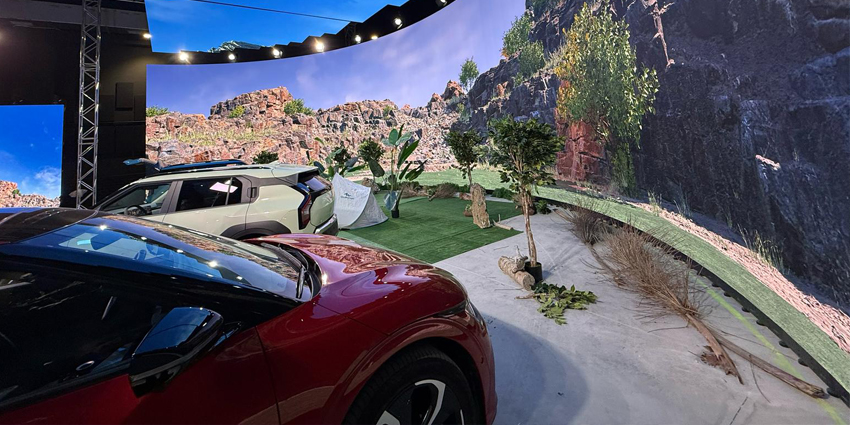This week, Alfalite, a European manufacturer of virtual production products, announced the release of SKYPIX RGBW & IM, a new series of ceiling-mounted LED panels specifically designed for virtual production XR environments and workflows. This innovative product provides natural and adaptable scene lighting from above.
A key feature of SKYPIX is its Invisible Marker system, which replaces traditional physical tracking markers with a virtual, invisible sticker that is compatible with existing tracking technologies. This system ensures accurate real-time synchronisation and allows for the configuration of customisable IM constellations, embedding metadata directly into the shoot.
Lighting control is managed through a dedicated application that enables real-time adjustments of both colour and intensity—by zone or by pixel—with user-defined presets tailored to production needs.
Luis Garrido, Executive Director of Alfalite, added:
With SKYPIX, we’re taking the integration of image and light within virtual production volumes one step further. We listened to studios and lighting technicians to create a panel that not only displays content, but also lights the scene with unprecedented realism and communicates with the broader production system.
Moreover, Garrido said that the new product “eliminates the maintenance and synchronisation issues associated with traditional tracking markers.”
“Once again, we’re surprising the market with a cutting-edge solution unlike anything previously available for film, television, advertising, and broadcast,” Garrido remarked, also adding that “it’s a tool designed to let creators focus on storytelling without compromising technical precision.”
How is Immersive Filmmaking Changing the Entertainment Industry?
The impact of immersive technologies is evident throughout the entire entertainment landscape. Galleries and art exhibitors incorporate augmented reality, virtual reality, and mixed reality experiences into their events, allowing users to explore creations in new ways. Metaverse environments are emerging to enhance the experiences of fans who want to attend concerts from a distance or watch sporting events from new perspectives.
Cinemas and theatres are also getting involved, providing viewers access to headsets and immersive technology. For instance, IMAX VR centres worldwide introduced “John Wick” fans to immersive experiences by allowing them to play a VR game within the cinema. Major music events like Tomorrowland and Coachella have experimented with VR, mixed reality holograms, and 360-degree videos for attendees.
Furthermore, new platforms for consuming entertainment are continuously emerging, offering users more ways to access content. VR movie apps like Plex VR and Bigscreen enable consumers to enjoy movies and shows created with immersive technology in their homes. Foremost market leaders are even developing metaverse environments for users of extended reality.







